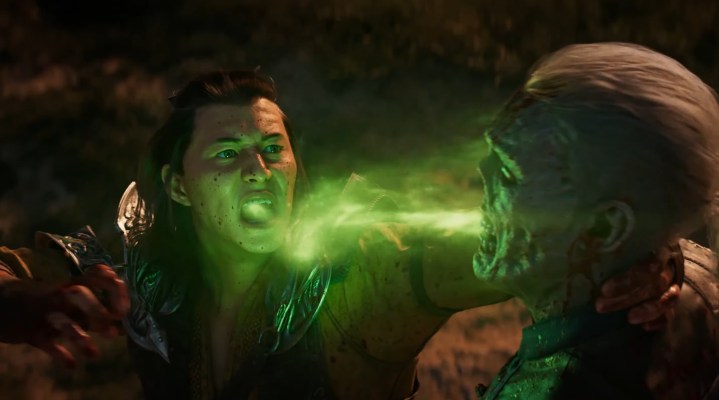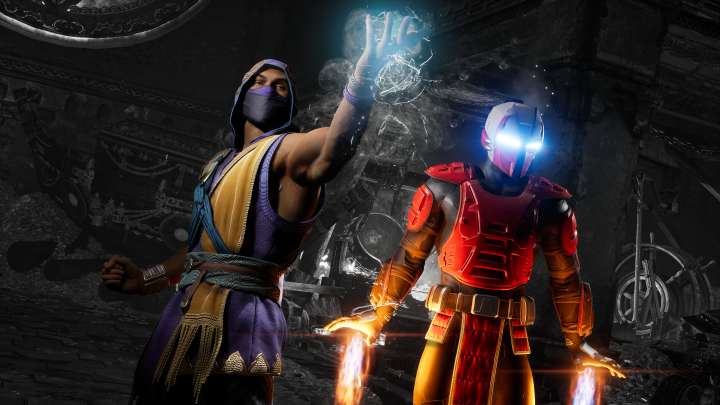NetherRealm Studios has perfected the cinematic fighting game story mode.
Ever since 2008’s Mortal Kombat vs. DC Universe, the Chicago-based studio has played a critical role in fleshing out what single-player, story-focused narratives in fighting games should look like, forever changing a genre that historically focused on multiplayer. By now, the formula for these story modes feels like it’s down to a science. They’re split into multiple chapters, each focusing on one character and featuring four fights between cinematic action and character-focused scenes.
This setup is no different in Mortal Kombat 1, a soft reboot for the series following the bombastic, time-bending ending of Mortal Kombat 11‘s Aftermath expansion in 2020. While my full review of Mortal Kombat 1 is still in the works because we got code shortly before the embargo, I have beaten Mortal Kombat 1’s story mode. Playing through it showed how NetherRealm has mastered this fighting game mode. As for the story it’s telling, experiencing Mortal Kombat 1’s narrative is like watching a Marvel superhero movie, for better or worse.
Marvelous Kombat
At the end of the Mortal Kombat 11 Aftermath expansion, Liu Kang beats Shang Tsung and decides to reset the Mortal Kombat timeline. Mortal Kombat 1 picks up eons after this in Liu Kang’s “new era” and begins with Raiden, Kung Lao, Johnny Cage, and Kenshi being recruited and trained for the titular martial arts tournament between Earthrealm and Outworld. In typical Mortal Kombat fashion, the conflict and violence only scale up from there as Shang Tsung, General Shao, and another villain I won’t spoil here are revealed to have regained their power thanks to a mysterious benefactor.

It’s a solid premise that essentially allows Mortal Kombat 1 to play the series’ greatest hits all at once. It features almost every notable hero and villain from the whole series that its fans want to see, including ones from the often ignored early 2000s entries. Like Avengers: Infinity War or Avengers: Endgame, NetherRealm also tries to ensure that everyone in its cast has time to shine, even if there are only 15 chapters and 23 characters in the launch roster.
The cinematics between fights look fantastic and even feature engaging cinematography and fight choreography that’s better than anything in the 2021 Mortal Kombat live-action movie. An intense brawl in Shang Tsung’s decrepit dungeon earlier on in the story is all done in one take, and it’s the Mortal Kombat 1 combat encounter that has permanently etched its way into my memory, even though I never needed to pick up a controller during it.
The powered-up characters of a universe like Mortal Kombat’s aren’t too far off from the superpowered heroes of Marvel or DC. That’s why it makes sense that Mortal Kombat constantly crosses over with DC (they share a parent company) and why going through Mortal Kombat 1’s story mode feels like I’m playing through a superhero movie. Unfortunately, it also comes with some of the caveats that can plague modern Marvel movies.

Stakes are too low
To start, until the game’s final chapters, I found Mortal Kombat 1’s plot to be surprisingly tame. Major heroes and villains all have apparent plot armor during key story moments. While the juxtaposition between Mortal Kombat’s gruesome fights and relatively injury-free cutscenes has always been an underlying issue, it does undermine the stakes of Mortal Kombat 1’s story, as I rarely felt that many were at risk of dying. This is an issue I’ve also had with the stakes in recent Marvel movies; maybe that feeling is inevitable when a franchise has gone on this long.
Avoiding major spoilers, I’ll also say that as the game goes on, its cast of main characters grows, and the more personal story threads are dropped. Johnny Cage’s path to becoming more selfless and the emotional struggles of Liu Kang, who isolated himself from dear friends so he could guide this new timeline and Earthrealm, aren’t explored to their fullest despite being a focus early on. While character-focused chapters do allow the game to deftly juggle a large cast, they also limit the amount of character development allowed for those who aren’t its focus — and doubly so as the story becomes more action-oriented in its late stages. By then, NetherRealm is smashing all of its Mortal Kombat action figures together in glorious fashion, which is entertaining, but lacks emotional depth.

If you like superhero movies, even when they prioritize spectacle over character, you’ll find more than enough to enjoy Mortal Kombat 1’s story mode. It’s a good place to get a taste of the fighting game’s controls and the playstyles of multiple characters. And between those fights is a well-shot superhero ensemble adventure. It’s not innovating like Street Fighter 6’s World Tour mode, nor does it redefine what video game narratives can be. Still, it shows NetherRealm’s mastery of the fighting game story mode formula it established.
Mortal Kombat 1 launches for PC, PlayStation 5, Xbox Series X/S, and Nintendo Switch on September 19. Expect a full review from me around then.
Editors’ Recommendations
Services Marketplace – Listings, Bookings & Reviews